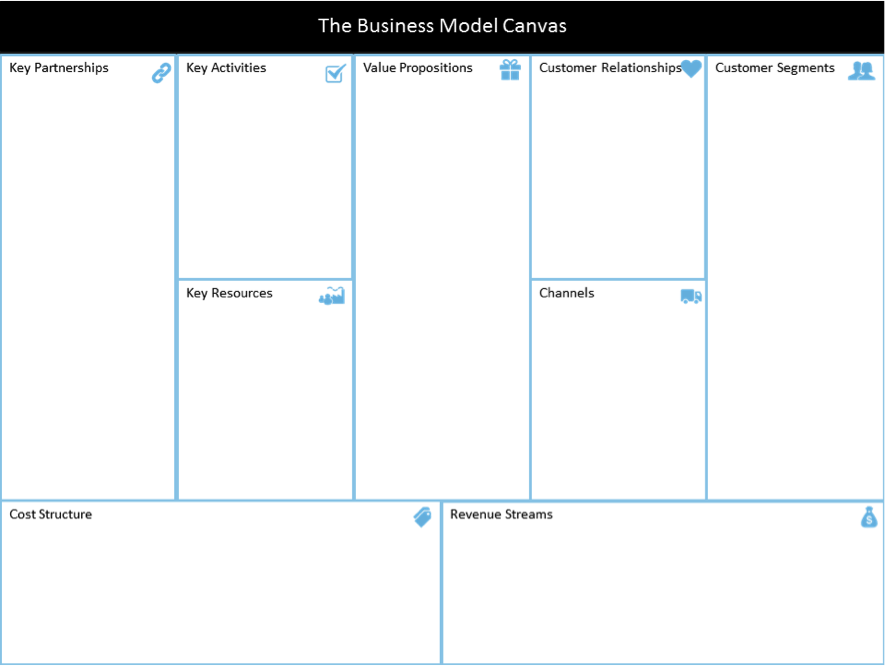With a piece of paper, a pen, sticky notes and 15 minutes, you can transform your business — and your life. This is all you need to make a Business Model Canvas, which reduces a traditional business plan from dozens, if not hundreds, of pages into a single page.
I introduced the Business Model Canvas to StartupNation two months ago, and last month we worked on the right side of the canvas. This month, we’ll finish the left side, which will fundamentally change the way you think about your business — and yourself in relation to it.
The Business Model Canvas

Key activities
List the most important activities the team must expertly perform to create the value the company exists to provide.
Did you catch that? The key here is that these are activities the team needs to excel at — not the CEO. This part of the canvas is what tends to trap small-business owners in the DIY mindset. The Business Model Canvas is the small-business owner’s road map out of that trap.
Cluttering this section with too many activities is a mistake. Don’t get lost in the weeds of the Key Activities. Don’t work in the business without ever having time to work on the business. It’s inefficient and hurts the Value Propositions, which is the section from which everything else radiates.
For the Key Activities of the Business Model Canvas, embrace this powerful three-word business plan: do less, better.
What does this company do better than everyone else? What’s the activity that’s essential to the business model? Never list bookkeeping and accounting — unless the business is an accounting firm. Every small business can and should outsource that work.
Also on StartupNation.com: Your Business Needs a (Nontraditional) Plan
Key partners
For a small business that plays David to someone else’s Goliath, this is a powerful area.
Forming strong partnerships is unappreciated far too often. This journey is not one to be made alone. Trying to do so will likely result in flailing around in the DIY trap of attempting to handle every aspect of the business. But it’s precisely because small businesses lack capital and size that partnerships are at least as essential as they are for large companies.
Don’t be afraid to rely on the expertise of others to build the business. What Key Partnerships will propel the business beyond its limited cash flow?
The partnerships a business needs to survive in its first year might be very different from the ones it will need in its twentieth. Some of the activities might move from the Key Activities area of the canvas to your Key Partnerships area — and back again.
Whatever happens, remember that partnerships are crucial.
Key resources
List the essential resources that the business relies upon to deliver its core product. How much capital is needed? What key assets (equipment, buildings, technology) are needed? Is a line of credit needed?
The second reason startups fail is money, just behind a lack of product-market fit, and many entrepreneurs are wrong about how much money is required to start a business. There must be enough cash to sustain an operation while trying to become profitable. Recognize the risks and be honest about what the business needs to succeed.
Key Resources will change as the business grows, which is why this is important for staying ahead of competitors. Consider which Key Resources provide the greatest competitive advantage. Is it a powerful brand? Unique partner relationships? Intellectual capital? A powerful database or algorithm?
Survival in the long term as well as for the first year is rooted in this portion of the canvas.
Cost structure
Like revenue on the right side of the canvas, Cost Structure is fairly clear once the rest of the canvas is in place. Add all costs associated with the activities, partnerships, and resources on the left side of the canvas, and what’s left is the fundamental cost structure for operating the business.
The expenses associated with internal tasks such as bookkeeping don’t belong here. Right now, only include costs that are critical to the business model.
Step back and look at the Business Model Canvas once the sticky notes are in place for the central costs. To the extent that Cost Structure on the left is less than Revenue Streams on the right, you have a business. To the extent that it’s not, you don’t.
Congratulations. It’s done. View this Business Model Canvas holistically as the business grows. Find new and creative ways to improve Revenue Streams while shrinking Cost Structure. Refine the Business Model Canvas with iterative learning, scientific experimentation, and measured progress driven by customer feedback.
Most importantly, though, use it to break free from the DIY trap.
http://amzn.to/2aekxeX






